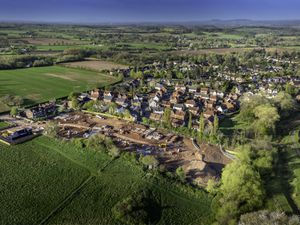Could house prices in the West Midlands be about to go through the roof?
The West Midlands is set to be one of the UK’s house price hot spots in the coming months, according to a new report.

It is projected to be one of the top regions in the country for fast growing property prices, according to research from leading accountancy PwC.
But the new report also predicts the West Midlands will lag behind other regions when it comes to economic growth in 2017.
PwC expects growth to slow in most areas next year as the UK continues to feel the effects of uncertainty due to Brexit.
PwC’s latest UK Economic Outlook says the West Midlands is projected to see house price growth of 4.5 per cent in 2017, above the UK average of 3.7 per cent.
Out of the UK’s 12 regions, the West Midlands will only be behind the East of England, East Midlands and the South West.
It means the average home in the West Midlands could be worth around £183,000 this year, £8,000 higher than in 2016, and could rise to more than £208,000 by 2025. Matthew Hammond, Midlands regional chairman for PwC, said: “The housing market in the Midlands reflects the strength of the West Midlands economy as a key region in the UK.
“This latest outlook supports the findings of our Good Growth for Cities Index IN 2015 & 16 which show that key cities in the region, including Birmingham, Coventry, Stoke-on-Trent and Wolverhampton, are performing well in terms of jobs, health, the number of business start-ups and transport and environment.
“The West Midlands is becoming the destination of choice for businesses looking to operate outside of London. The region has the necessary ingredients for a strong economy and it’s essential that public, civic, business and education leaders continue working together to further improve the economic, employment and skills prospects in the West Midlands.”
The report also forecasts that the West Midlands economy will grow by around 1.2 per cent this year, slowing to 1.1 per cent in 2018. But this is still an improvement on PwC’s forecast in November of just one per cent growth this year.
It will still lag behind the UK as a whole, which is predicted to slow from 1.8 per cent growth in 2016 to around 1.5 per cent this year and 1.4 per cent next year.
PwC says this is due to slower consumer spending growth and the drag on business investment due to ongoing political and economic uncertainty relating to the outcome of the Brexit negotiations.
While UK economic growth held up better than expected in the six months following the Brexit vote, growth slowed in the first half of 2017 as inflation rose sharply, squeezing household spending power.
PwC expects consumer spending growth to continue to slow down in 2017-18 as inflation eats into real spending power and wage growth remains subdued despite record employment rates.
A PwC spokesmn said: “So far, consumers have offset this in part through higher borrowing, but there are limits to how much further this can go as household savings ratios have already fallen to very low levels. On the other hand, the weak pound should also have some offsetting benefits for net exports as will a stronger global economy.”





